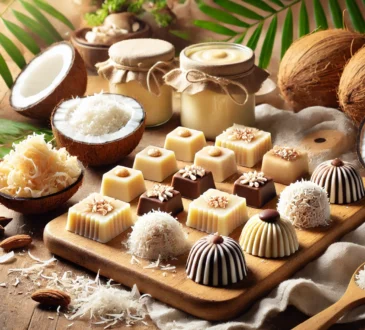
How to Make Color Pencils at Home and Start a Business
Creating your own color pencils at home can be a fun and rewarding project. It can also be a great business idea if you’re looking to sell handmade art supplies. This guide will walk you through the process of making color pencils and provide tips on how to market and sell them.
Materials Needed
- Pigments: High-quality pigments in various colors.
- Binder: Gum arabic or cellulose gum to bind the pigments.
- Clay: White clay or kaolin to give the pencil its texture.
- Wax: Paraffin or beeswax to smooth the consistency.
- Wood: Thin wooden dowels or wood strips for the pencil casing.
- Glue: Non-toxic wood glue.
- Pencil Sharpener: For shaping the pencil tips.
- Molds: Silicone molds or a simple mold made from wood.
- Knife or Sandpaper: For finishing and smoothing the pencils.
- Protective Equipment: Gloves, mask, and goggles to ensure safety.
Step-by-Step Instructions
Step 1: Prepare the Pigment Mix
- Measure Pigments: Measure out your pigments. The ratio will depend on the desired color intensity. A common starting point is 50% pigment.
- Mix Binder: Mix the gum arabic or cellulose gum with water to create a binder. The ratio is typically 1 part binder to 4 parts water.
- Combine Ingredients: In a bowl, combine the pigments with the binder and clay. Mix thoroughly until it forms a smooth paste.
- Add Wax: Melt the wax and gradually add it to the mixture. This helps the color stick and makes the pencil glide smoothly.
Step 2: Form the Color Cores
- Mold the Cores: Pour the mixture into molds to form the pencil cores. Silicone molds are ideal because they are flexible and non-stick.
- Drying: Allow the cores to dry completely. This may take several hours to overnight, depending on the humidity and temperature.
Step 3: Prepare the Wooden Casings
- Cut Wood Strips: Cut the wooden dowels or strips to the desired pencil length (usually around 7 inches).
- Halve the Strips: Halve each strip lengthwise to create a groove for the color core.
Step 4: Assemble the Pencils
- Glue the Core: Place the dried color core into the groove of one wooden strip.
- Glue the Casing: Apply wood glue along the groove and press the other half of the wood strip on top, encasing the color core.
- Clamp and Dry: Use clamps or place the pencils under a weight to ensure a tight bond while the glue dries. Leave for several hours or overnight.
Step 5: Finish the Pencils
- Shape and Sand: Use a knife or sandpaper to shape the pencils and smooth out any rough edges.
- Sharpen the Tips: Use a pencil sharpener to create a pointed tip for each pencil.

Marketing and Selling Your Color Pencils
Step 1: Branding
- Create a Brand Name: Choose a catchy and memorable name for your product.
- Design a Logo: A professional logo can help your product stand out.
- Packaging: Invest in attractive and eco-friendly packaging.
Step 2: Create a Website
- E-commerce Platform: Use platforms like Shopify, Etsy, or your own website to sell your pencils.
- Product Descriptions: Write detailed descriptions highlighting the handmade process and quality of the materials.
Step 3: Social Media Marketing
- Platforms: Use Instagram, Facebook, and Pinterest to showcase your products.
- Content: Post photos, videos, and behind-the-scenes content of the pencil-making process.
- Engagement: Engage with your audience through comments, stories, and live sessions.
Step 4: Local Markets and Craft Fairs
- Booths: Set up a booth at local craft fairs and markets to sell your pencils directly to customers.
- Networking: Network with other crafters and potential customers.
Step 5: Wholesale and Retail Partnerships
- Local Stores: Approach local art supply stores or gift shops about carrying your pencils.
- Online Retailers: Partner with online retailers to expand your reach.
Step 6: Customer Feedback and Improvement
- Reviews: Encourage customers to leave reviews and feedback.
- Adaptation: Continuously improve your product based on customer feedback.
Conclusion
Making color pencils at home is a detailed process, but with the right materials and patience, you can create high-quality, handmade pencils. By establishing a strong brand and marketing strategy, you can successfully sell your color pencils both online and offline. Enjoy the process of crafting and building your own business!




